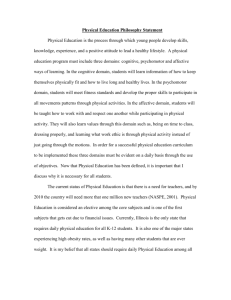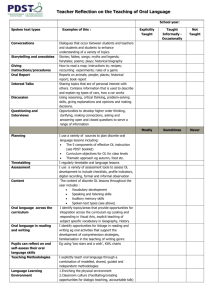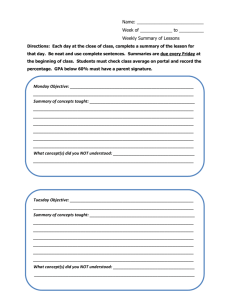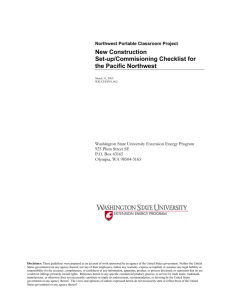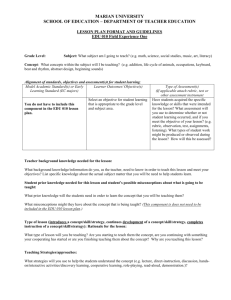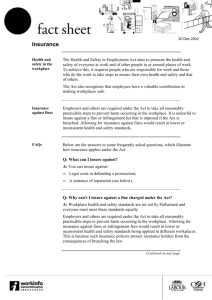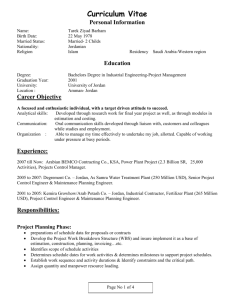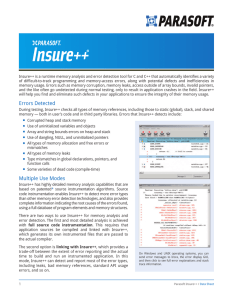3 Curriculum Components of Six Year Cycle
advertisement
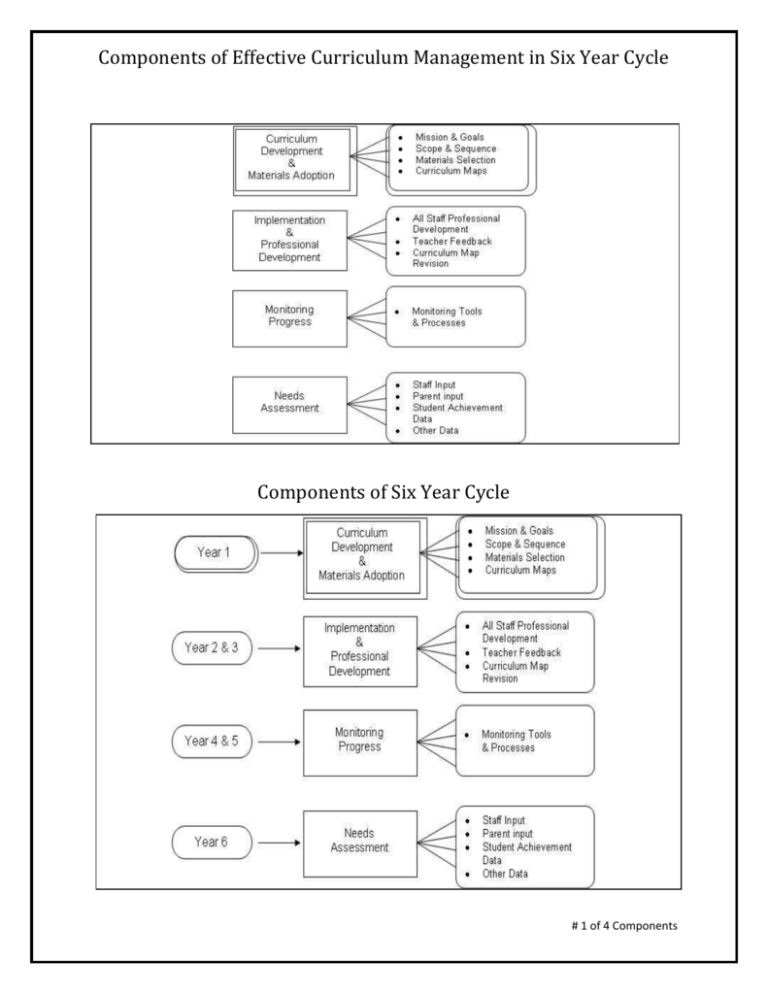
Components of Effective Curriculum Management in Six Year Cycle Components of Six Year Cycle # 1 of 4 Components Components of Effective Curriculum Management in Six Year Cycle Needs Assessment A Needs Assessment: Assists district leaders in creating an appropriate focus for curriculum work. Identifies any existing gaps between current status of student achievement and desired results. Assumptions It is important to: Assess the current “state of things” before moving into writing curriculum and selecting materials. Consider the opinions of different stakeholders about how things are going (teachers, administrators, parents, etc.). Take an objective, honest look at student achievement data. Create shared knowledge of district-wide learning trends and attitudes to build cohesiveness and trust. Curriculum Scope and Sequence Development A Scope and Sequence: Establishes a clear set of learning objectives as the non-negotiable content to be taught. Develops a solid understanding of the content area and the development of the learner. Serves as a map for all curriculum work that follows. Assumptions It is important to: Establish Alaska Content Standards and GLE’s as the basis for the development of learning objectives. Determine that the written learning objectives can be taught in the amount of available time for instruction. Insure that the learning objectives demand cognitive rigor and complexity. Create vertical alignment of learning objectives across content and grade levels. Provide inclusion of teaching staff’s input and comments # 2 of 4 Components Components of Effective Curriculum Management in Six Year Cycle Curriculum Materials Adoption A Materials Adoption: Identifies the materials to be adopted that support the instruction of the guaranteed and viable curriculum. Assumptions It is important to: Select materials that align with the Scope and Sequence. Select materials that are supported by research and/or literature. Insure consideration of universal access for all students, including Special Education, English Language Learners, Talented and Gifted. Consider district capacity, including technology components, cost considerations, and staff capacities. Provide opportunity for all stakeholders (community, teaching staff, administration) input . Curriculum Map Development A Curriculum Map: Provides daily, weekly, or quarterly guidance to teachers in order to insure that the written curriculum is the taught curriculum. Assumptions It is important to: Pace the objectives so that they can be covered in the amount of time available. Insure that SBA assessed objectives are covered prior to the SBAs. Identify what components (pages, routines, etc.) of the adopted materials are to be used. Identify the vocabulary that should be taught # 3 of 4 Components Components of Effective Curriculum Management in Six Year Cycle Professional Development & Implementation Professional Development & Implementation: Provides orientation to curriculum development policies, philosophy, and processes. Insures that all staff with responsibilities for the content area know how to use curriculum documents and adopted materials. Establishes process for receiving feedback from staff regarding new curriculum and materials. Assumptions It is important to: Provide staff with background regarding curriculum policy, philosophy, and development process. Require participation in professional development for all staff with responsibilities for the content area. Communicate expectations regarding the use of the curriculum and materials. Solicit and value feedback from staff regarding needed revisions to curriculum documents. Monitoring Progress Monitoring Progress: Includes the various activities undertaken by district and school administrators and by teacher teams to observe curriculum implementation. Considers strengths or weaknesses with the instructional materials for possible supplementation. Identifies professional development priorities. Assumptions It is important to: Establish principals as primarily responsible for monitoring curriculum implementation. Provide support, professional development, and tools for principals and teachers to use in monitoring curriculum implementation. Provide ongoing professional development for continuous improvement in implementation of curriculum and materials. # 4 of 4 Components
